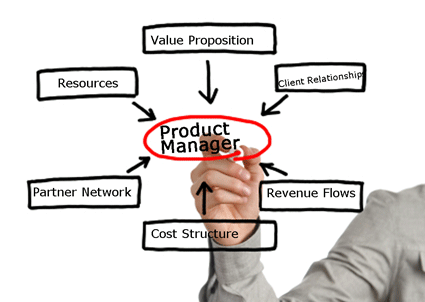In this #PNHangout, Seema Joshi, Lead Product Manager – BMC Software, shared with us her insights about Product management and the challenges and scope on the road ahead for Women Product Managers.
Why did you choose to be a Product Manager?
There are two aspects to why I chose to be a Product Manager. The first is related to the evolution of the Indian IT industry and the second my personal journey.
 The Indian IT industry, after its beginnings in the 1980s, saw good growth in the 90s with the economy opening up primarily due to high cost arbitrage. During this time the industry was dominated by the services sector. In the 2000s, the industry was maturing rapidly due to economic downturn pressures and consequently margins were eroding and cost arbitrage decreasing. The services industry still dominated the IT sector as the cost arbitrage play was becoming increasingly competitive. We also began to see larger R&D centers, mostly captive, setting-up base in India. Now, in this current decade, the focus is shifting to total product ownership. With increased expertise as well as domestic markets, startups and VC eco-system expanding, product management is becoming a critical part of success. It is more critical than it has ever been. While we do have a growing leadership presence across companies in India from a R&D product and project delivery stand-point, product management and product leadership focus needs to be stronger to deliver great products to local and global markets through entrepreneurship or intrapreneurship. Product management clearly has a large role to play in shaping the course of the Indian IT Industry.
The Indian IT industry, after its beginnings in the 1980s, saw good growth in the 90s with the economy opening up primarily due to high cost arbitrage. During this time the industry was dominated by the services sector. In the 2000s, the industry was maturing rapidly due to economic downturn pressures and consequently margins were eroding and cost arbitrage decreasing. The services industry still dominated the IT sector as the cost arbitrage play was becoming increasingly competitive. We also began to see larger R&D centers, mostly captive, setting-up base in India. Now, in this current decade, the focus is shifting to total product ownership. With increased expertise as well as domestic markets, startups and VC eco-system expanding, product management is becoming a critical part of success. It is more critical than it has ever been. While we do have a growing leadership presence across companies in India from a R&D product and project delivery stand-point, product management and product leadership focus needs to be stronger to deliver great products to local and global markets through entrepreneurship or intrapreneurship. Product management clearly has a large role to play in shaping the course of the Indian IT Industry.
I am a Bachelor of Civil Engineering and I began my career as a structural engineer after graduation. While I loved my work building peoples’ dream houses, factories, bridges, etc. I knew that I was more productive and happier working with people. So, I took up an opportunity with eGain Communications- a product company in Pune in a customer facing role where, after sometime in this role, I moved to the sales team as I thoroughly enjoyed working with in a customer oriented role. We were a small team targeting new territories which meant wearing various hats from lead-gen, pre-sales, solution consulting, account management all the way to acquiring business. It wasn’t always easy, but it was challenging and educating work. After a few years in this role, I was offered a position in the product management team and the decision to move wasn’t difficult. I think I always was and still am a sales person at heart. So the proximity of working with customers to find solutions for their problems was important to me. At the same time, I had seen typical enterprise sales cycles span anywhere from 6-12 months. I now had an opportunity to bring to the table my experience of working with customers, their needs and expectations from solutions, etc. and, with the outside-in perspective to help build the product, I could indirectly contribute to getting business from a greater number of customers beyond my sales territories! The product management role was like a win-win.
It was both the opportunity and the challenge to be a Product Manager that got me into the role nearly a decade ago and it still continues to be my passion!
Great, you’re a Product Manager. So what do you really do?
I’m often asked this question and I have begun enjoying answering it, so much so that I have two versions of answers. For the people interested in a short answer I tell them – “As a PM I do lots of conversations using a ton of post-its, a set of lenses and glue.”
For the ones still with me, I tell them: a PM is responsible for the success of the product to maximize business value through the product’s lifecycle depending on the business goals—be it driving market share, revenues, customer retention or whatever the focus for that product might be in its life-cycle at that point. This requires a PM to have good understanding of the unsolved problems in the market to identify market opportunity. To do this effectively they need to bring out the post-its and engage with customers to understand problems in their context and what their pain points are.
They then need to use their short-term and long-term lenses to review this vis-à-vis corporate strategy, internal strengths, risks, funding, competitive landscape, etc. to come up with a business strategy to address the market opportunity and product strategy to build a kickass product.
With the strategy in place, they need to communicate with the entire value chain to help deliver this—right from exec approvals, working with engineering to build the product and with marketing to convey the planned product value, sales tools and processes to ensure sales is able to effectively sell to the right buyer and with support to ensure customers understand how to use the product in the desired way, etc. They need to be the glue between cross-functional stake-holders to ensure right execution.
Though a PM might not be responsible for each of these areas, it is very important for every Product Manager to still have what I call the imbibed-CEO attitude. You may not call the final shots in each case, but if you do not align and orchestrate various aspects while driving your areas of responsibilities, you might reduce the odds of your product’s success. A Product Manager really must be passionate and enthusiastic about everything related to the product to make it truly successful!
Managing a product demands multiple sources of information and skill. How can a Product Manager prepare herself for this role?
A Product Manager needs lots of post-its, glue and conversations as they do their daily jobs. Conversations are typically of two kinds—one in the listening mode to gather insights and the other communicating what to do and not to do and conveying value and ways to get there. The PM does not need to be the encyclopedia, but needs to know different ways to get this information that can go into the encyclopedia. It is really a mix of art and science!
There are recommended practices for the entire productizing process that can be used to source and communicate information effectively. Individually a PM can focus on some of the following to do this well:
- Be a good listener: It is never about what the product can do. It is always about what the product can do for the customer. Engaging with customers and the market to understand problems in their context is critical. This involves being able to ask the right questions, understanding customers and their business and what their key pain points are as means is to identify pervasive problems.
- Good domain understanding: It isn’t a pre-requisite for a PM to be a domain expert right from the beginning. However, to engage effectively with customers requires being able to do it in the context of their domain. So a PM needs to quickly get a good handle on how things work. Regular interaction with customers and prospects is definitely a great way to do this as well as following analysts and thought-leaders in the industry, tracking competition, attending industry events, etc.
- Build an analytical approach to problem solving with a business-centric mindset: It is not about picking the first or the easiest solution or solving the problem of the noisiest customer. To derive the next set of outcomes, having understood the unsolved problems in proper context, requires being able to quickly analyze scenarios, potential opportunities, dependencies, financial implications, impact and mitigation plans. PMs need not be experts in each aspect but he needs to be able to evaluate options and work with the value-chain towards achieving business goals for which time and cost is critical!
- Communicate effectively: Effective communication is the hallmark of a good PM. A PM is required to constantly communicate with various stakeholders to achieve a common objective i.e. to build a product that delivers value. For instance, a PM needs to communicate
- Business opportunity and solution recommendations to execs for strategy and funding approvals
- Product requirements to engineering to build the right product
- With marketing to articulate solutions and convey the right value messaging
- With analysts or customers to convey the solution and its value
If you fail to sufficiently communicate any of these, it could affect success!
- Leadership and self-leadership: It is important for a PM to bring in the right vision, energize teams, influence, and be good at decision making for many a time it is about right prioritization and timely decisions. This cannot be done without passion for your product and its success. While good processes help reduce risk, even at an individual level, a PM needs to take charge and align and inspire teams towards their goals.
- Belief, patience and perseverance: There are no two ways about it. In product management you’re in for the long haul. It is about a product’s journey towards success. If you want things to happen overnight, or view it just as a set of tasks from one release to another, you might end up taking the wrong paths. Keep the focus!
Women Product Managers – there are a few of them. Is it a disadvantage to be a woman?
Overall the gender diversity ratio in the Indian IT industry is approximately 25 % women, which is better than others. However, most women are still in traditional roles like HR and Marketing and to some extent engineering, technical-writing and delivery-centric leadership roles. The presence in product management and product leadership is still really small. In fact, in my 8 years of being a PM, both at my current and previous company, I have been the only woman PM in India. Of course it is a little different when it comes to global teams.
In India I have been on many forums and meetings where I am the only woman. Being a woman PM tends to have a two-fold challenge. For companies, organizationally, product management as a function is still not mainstream; it is getting better but it still isn’t there. This is further compounded by the lower women ratios overall and within the function.
One of the common challenges most Product Managers need to overcome is related to change—recommend change in strategy, change in practices to address opportunities, culture of organization, etc. If you’re the only woman in the room driving this, be ready with all kinds of data-driven reasons, proof-points and if-else conversations to make the change management smooth and effective to avoid “but, this is not how we’ve done it in the past” objections.
Beyond that, at a larger level, the challenge is a common one irrespective of roles—to have better diversity across hierarchies in an organization. If companies want to make a notable difference in diversity, it is crucial for them to cultivate a culture where women not only end-up taking more traditional roles like HR, Marketing, etc. but also actively encourage women to take up roles along technology leadership (as architects) or product leadership (product management and innovation) as we take the Indian IT industry to the next level AND if we don’t want women to be left behind once more time to only catch-up later!
I would also like to give a shout out to women in the industry to gear up for this and be prepared to play your part. Remember that what got you here won’t get you there and these days “lean is in”, so sharpen your skills to make a difference. For a better outcome tomorrow, it is a choice we have to make today—as individuals and corporates!
Is there a bright side for Women as Product Managers?
One of the key things for a Product Manager is to empathize with users and to care for the overall experience. Women tend to be naturally more attuned to this. They also come across as effective communicators and influencers. A PM needs to do a lot of communication as there are various stakeholders to be managed across ranks and a Product Manager has to be able to influence by bringing out the reason and value of why things need to be done the way they need to.
Being great at multitasking is a benefit as well. Recent studies are converging with the hypothesis that women are found to be better at multitasking than men. A Product Manager is always juggling between different things and different people and yet needs to keep all tracks aligned. It helps to be able to prioritize tasks, organize time and most importantly keep calm under pressure as they rapidly switch between activities.
Lastly, their leadership styles help too. PMs not only need to nurture a product from conception through its life-cycle but also drive larger teams towards a common objective without having any authority over them! This is corroborated by the increasing number of women taking up significant roles in corporations. Women Product Managers are definitely making a mark. Marissa Mayer’s growth from a great Product Manager to being the CEO of Yahoo is a testimonial to it. So there definitely is a bright side for women as Product Managers.
#PNHANGOUT is an ongoing series where we talk to Product Managers from various companies to understand what drives them, the products they work on and the role they play in defining the products success.
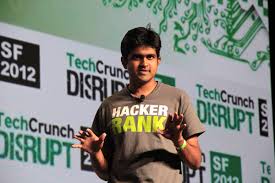 I am one of the founders of HackerRank, formally called InterviewStreet, where we are building a platform for programmers to hone their skills and companies to streamline their recruiting process. Currently we are a team of 66 split across Palo Alto and Bangalore and we have been signing up companies like FB, Amazon, VMWare, Bloomberg, etc. as our customers while simultaneously growing our developer community. We originally started off with a platform for mock interviews but we pivoted based on customer feedback and we kept iterating until we found a gap in technical recruiting which we discovered had a huge market but was struggling from a recruitment perspective which is why we chose to go ahead and tackle this domain.
I am one of the founders of HackerRank, formally called InterviewStreet, where we are building a platform for programmers to hone their skills and companies to streamline their recruiting process. Currently we are a team of 66 split across Palo Alto and Bangalore and we have been signing up companies like FB, Amazon, VMWare, Bloomberg, etc. as our customers while simultaneously growing our developer community. We originally started off with a platform for mock interviews but we pivoted based on customer feedback and we kept iterating until we found a gap in technical recruiting which we discovered had a huge market but was struggling from a recruitment perspective which is why we chose to go ahead and tackle this domain.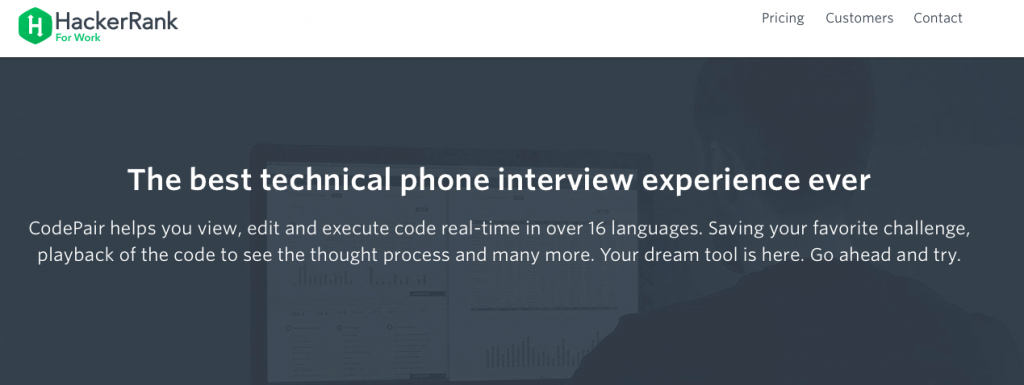 To aid in this recruitment process, we recently launched Codepair – a tool for real-time technical interviews. With this tool, you can view, edit and execute code in real-time in over 16 programming languages. When interviewing someone for a programming position there are a number of biases which both the recruiter and the candidate encounter. Factors such as the programming environment, spoken language, etc. can impact a recruiter’s decision when hiring someone. In fact, I remember my first interview where I wrote a syntax which the interviewer wasn’t familiar with. It was a new syntax and was correct but due to the lack of familiarity on the interviewer’s part we spent over 15 minutes debating over the validity of the program. Though I now understand why I didn’t get the job, that situation could have been avoided if I had a product that is so home to the environment of a programmer. Ultimately when you as an interviewer are taking a decision on whether to recruit a candidate or not, it is your bias right? You are processing a set of data internally to gauge if this person is going through to the next round or not and we want to make sure that we can eliminate as many of these biases as we can.
To aid in this recruitment process, we recently launched Codepair – a tool for real-time technical interviews. With this tool, you can view, edit and execute code in real-time in over 16 programming languages. When interviewing someone for a programming position there are a number of biases which both the recruiter and the candidate encounter. Factors such as the programming environment, spoken language, etc. can impact a recruiter’s decision when hiring someone. In fact, I remember my first interview where I wrote a syntax which the interviewer wasn’t familiar with. It was a new syntax and was correct but due to the lack of familiarity on the interviewer’s part we spent over 15 minutes debating over the validity of the program. Though I now understand why I didn’t get the job, that situation could have been avoided if I had a product that is so home to the environment of a programmer. Ultimately when you as an interviewer are taking a decision on whether to recruit a candidate or not, it is your bias right? You are processing a set of data internally to gauge if this person is going through to the next round or not and we want to make sure that we can eliminate as many of these biases as we can.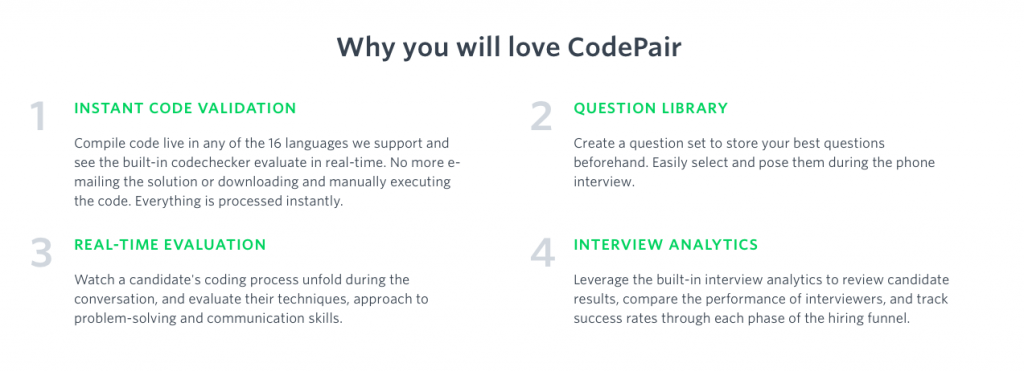 In terms of customer acquisition, we at HackerRank are focused on building an amazing content team. We tried running ads in the past but through feedback from our customers, we realized that that wasn’t the way forward for us. I am really excited about the content team and I think that that will be a great way to increase our customer-base. With respect to enterprise customers we have a very strong sales team. We have a SDR team and so on and that has definitely increased the customers coming on to the platform but for the hacker side of things, things have been relatively organic
In terms of customer acquisition, we at HackerRank are focused on building an amazing content team. We tried running ads in the past but through feedback from our customers, we realized that that wasn’t the way forward for us. I am really excited about the content team and I think that that will be a great way to increase our customer-base. With respect to enterprise customers we have a very strong sales team. We have a SDR team and so on and that has definitely increased the customers coming on to the platform but for the hacker side of things, things have been relatively organic

 The test, or the challenge, as we call it, gives us a good understanding of a candidate’s programming proficiency. If they have performed well in the challenge, we know the candidate is good. We then aggregate their coding activities from online sources like
The test, or the challenge, as we call it, gives us a good understanding of a candidate’s programming proficiency. If they have performed well in the challenge, we know the candidate is good. We then aggregate their coding activities from online sources like 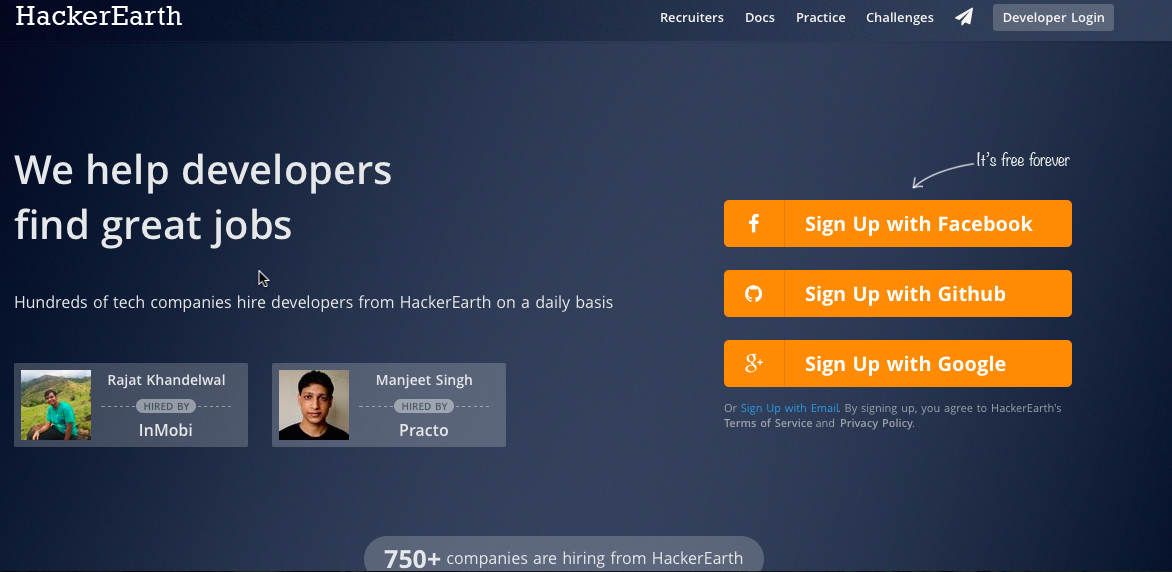
 Fizzy Software
Fizzy Software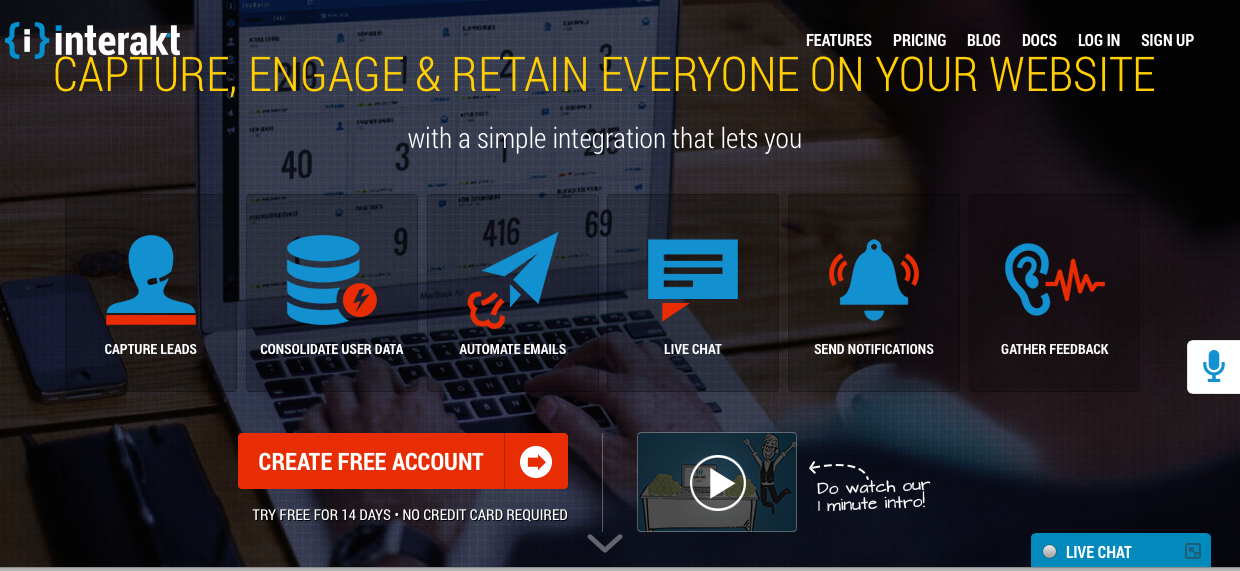 Across all these products that we built there was one underlying theme namely “customer engagement.” No matter what product we built, whether it was a B2B product or a B2C product there was always an angle of customer engagement involved i.e. how do you capture customer information, how do you understand what are they up to, how have they used the product, etc. Typically you would engage with your users by maybe sending a marketing email, automated email, informational email or transactional email. They might also have a query so you would want to respond to their support queries, get their feedback or engage in live chat. So there are currently a lot of different methods that websites and mobile apps use to engage their customers. Once we had built a number of products we saw this as one of the main underlying issues that we had to deal with every time we built a product. That is when we started diving deeper into what other solutions were out there and we learnt that we could build a solution which was probably better and more comprehensive and delivered the right value because of which we decided to build Interakt as a central customer engagement platform to allow you to capture, engage and entertain users.
Across all these products that we built there was one underlying theme namely “customer engagement.” No matter what product we built, whether it was a B2B product or a B2C product there was always an angle of customer engagement involved i.e. how do you capture customer information, how do you understand what are they up to, how have they used the product, etc. Typically you would engage with your users by maybe sending a marketing email, automated email, informational email or transactional email. They might also have a query so you would want to respond to their support queries, get their feedback or engage in live chat. So there are currently a lot of different methods that websites and mobile apps use to engage their customers. Once we had built a number of products we saw this as one of the main underlying issues that we had to deal with every time we built a product. That is when we started diving deeper into what other solutions were out there and we learnt that we could build a solution which was probably better and more comprehensive and delivered the right value because of which we decided to build Interakt as a central customer engagement platform to allow you to capture, engage and entertain users. 
 We were not concerned with releasing a perfect product when we began as our main focus was to test if our hypothesis was correct. So we knew that we had to release the product as soon as possible and then iterate rapidly based on the feedback we received from our customers. In fact from the idea to the release it took about 3 weeks to roll-out the product to the market. We would talk to our customers’ everyday through social media channels like twitter and blog posts where they would give us their feedback which we would then allocate to one of three different buckets –
We were not concerned with releasing a perfect product when we began as our main focus was to test if our hypothesis was correct. So we knew that we had to release the product as soon as possible and then iterate rapidly based on the feedback we received from our customers. In fact from the idea to the release it took about 3 weeks to roll-out the product to the market. We would talk to our customers’ everyday through social media channels like twitter and blog posts where they would give us their feedback which we would then allocate to one of three different buckets – 
 What interested me in Product Management, after having done multiple roles both on the business and the engineering side, was a desire to understand the big picture and play a pivotal role in deciding the success of a product and it has been my passion and interest ever since.
What interested me in Product Management, after having done multiple roles both on the business and the engineering side, was a desire to understand the big picture and play a pivotal role in deciding the success of a product and it has been my passion and interest ever since.






